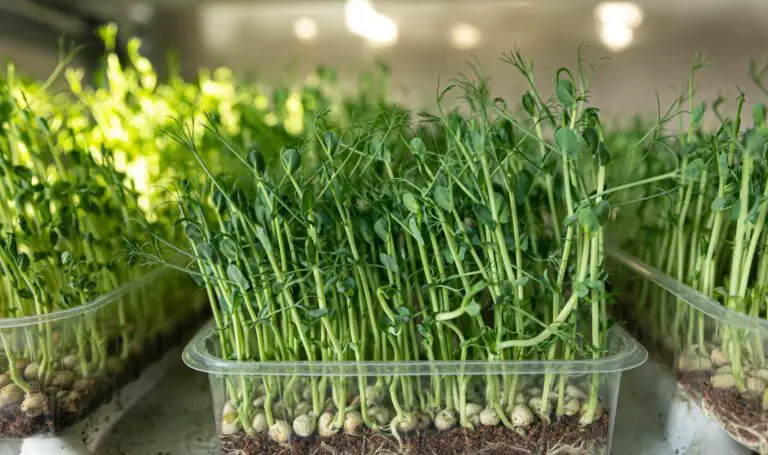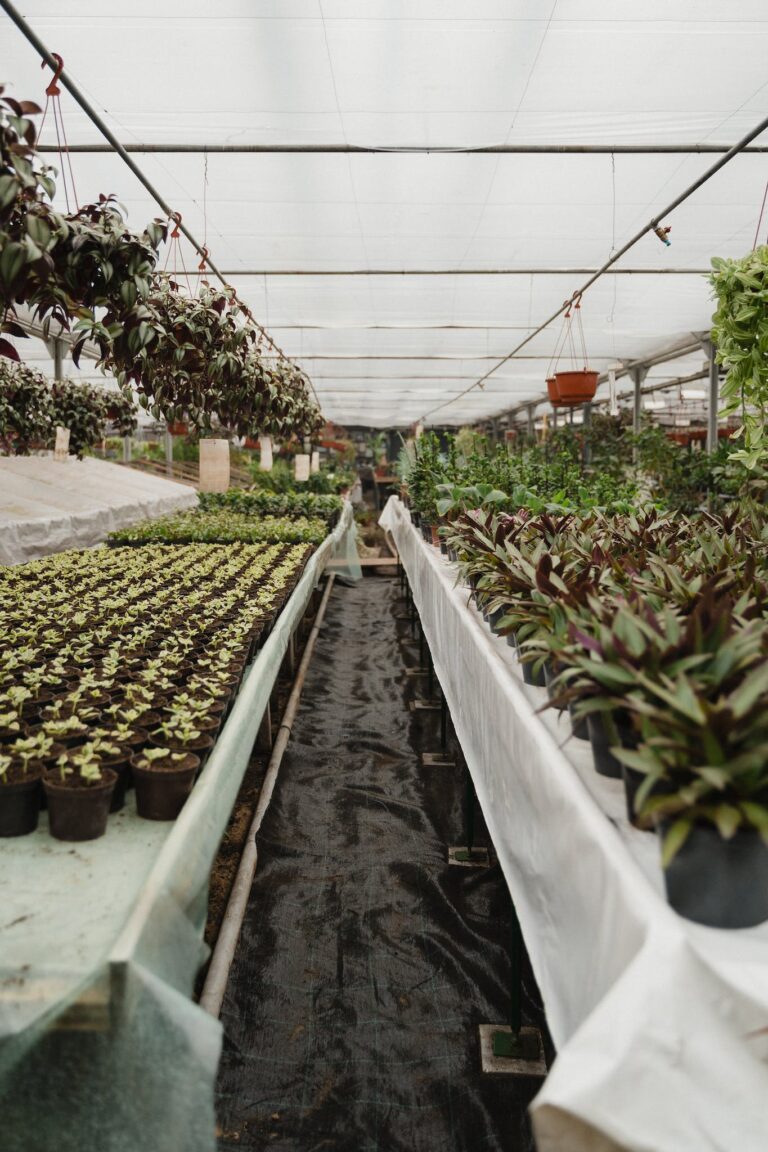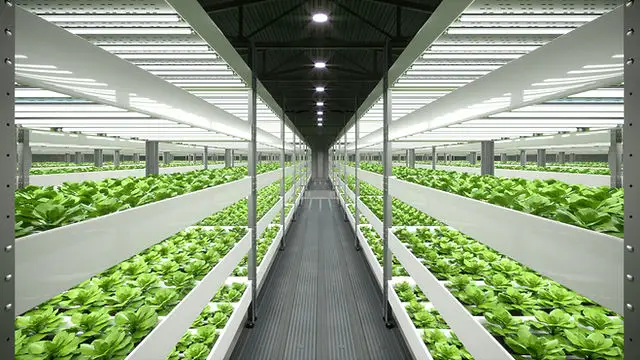Growing Brussel Sprouts: Nutritious and Delicious
Table of Contents
How to Successfully Cultivate Brussel Sprouts at Home
One of the keys to successfully cultivating Brussels sprouts at home is selecting the right soil. Brussels sprouts are heavy feeders and require nutrient-rich soil that is well-draining. A sandy loam or loamy soil with a pH level between 6.0 and 7.5 is ideal for these plants. You can enhance the fertility of your soil by incorporating organic matter like compost or well-rotted manure.
In addition to the soil, understanding the ideal climate and season for Brussels sprouts is crucial for a successful harvest. These cool-season crops thrive in temperatures between 45°F and 75°F (7°C and 24°C). They require a minimum of six hours of direct sunlight per day, so choose a location in your garden that receives ample sunlight. It’s best to start planting Brussels sprouts in early spring or late summer for a fall harvest. By aligning your planting schedule with the appropriate season, you can provide your Brussels sprouts with the most favorable growing conditions and increase your chances of a bountiful yield.
Choosing the Right Soil for Growing Healthy Brussel Sprouts
When it comes to cultivating healthy Brussels sprouts at home, choosing the right soil is of utmost importance. Brussels sprouts thrive in fertile, well-drained soil that is rich in organic matter. The ideal pH level for Brussels sprouts is between 6.0 and 7.5, slightly acidic to neutral. Testing the soil before planting can provide valuable insights into its nutrient composition and pH level, allowing you to make any necessary adjustments.
To ensure optimal soil conditions for your Brussels sprouts, consider incorporating organic matter such as compost or well-rotted manure. This will improve soil structure, increase water retention, and enhance nutrient availability for the plants. Additionally, adding a balanced fertilizer or soil amendments with a higher nitrogen content can further support the growth and development of your Brussels sprouts.
Moreover, it’s essential to prioritize proper drainage when selecting soil for Brussels sprouts. Waterlogged soil can lead to root rot and other diseases, causing stunted growth and poor yields. To improve drainage, you can add coarse sand or perlite to the soil mixture. This will promote better aeration and prevent excess moisture accumulation.
By carefully choosing the right soil composition for your Brussels sprouts, you are setting the stage for successful growth and bountiful harvests. However, the soil is just one aspect to consider when cultivating these delectable vegetables at home. Understanding the ideal climate and season for Brussels sprouts is another crucial factor that plays a significant role in their overall success.
Understanding the Ideal Climate and Season for Brussel Sprouts
Brussel sprouts, known for their unique flavor and high nutritional value, thrive in specific climates and seasons. Understanding the ideal climate and season for Brussel sprouts is crucial for successful cultivation and a bountiful harvest.
Brussel sprouts are cool-season crops that prefer moderate temperatures for optimal growth. They thrive in regions with a temperate climate, where summers aren’t too hot and winters aren’t too harsh. Generally, Brussel sprouts grow best in USDA Hardiness Zones 2-9, with temperatures ranging between 45°F (7°C) and 75°F (24°C). These conditions provide the perfect balance for healthy plant development, ensuring that the sprouts form tightly and uniformly.
Furthermore, it’s important to consider the season when planning to grow Brussel sprouts. They are known to be cold-hardy and can withstand light frosts, making them an ideal crop for fall and winter gardens. In fact, Brussel sprouts taste even better after being exposed to a light frost, as it enhances their flavor and sweetness. To ensure a continuous harvest, stagger your planting and select varieties with varying maturity dates. This way, you can enjoy fresh Brussel sprouts from late summer through early winter. By aligning your cultivation with the ideal climate and season, you’ll enhance the flavor and quality of your Brussel sprouts, guaranteeing a rewarding gardening experience.
Selecting the Best Brussel Sprouts Varieties for Your Garden
When it comes to selecting the best Brussels sprouts varieties for your garden, it’s important to consider factors such as flavor, size, and maturity rate. There are numerous varieties available, each with its own unique qualities that may suit your preferences and gardening conditions.
One popular Brussels sprouts variety is ‘Long Island Improved’. Known for its excellent flavor and tender texture, this variety produces medium-sized sprouts that mature in approximately 90 days. If you’re looking for a variety that offers a longer harvest period, ‘Diablo’ is a great choice. These sprouts have a slightly nutty flavor and can be harvested over an extended period, usually ranging from 120 to 180 days.
For those who prefer smaller, bite-sized sprouts, ‘Jade Cross’ is a fantastic option. This variety produces tender and flavorful sprouts that are perfect for roasting or adding to salads. ‘Rubine’ is another variety worth considering, as it produces beautiful red-purple sprouts that retain their vibrant color even after cooking.
It’s essential to do your research and select a Brussels sprouts variety that aligns with your gardening goals and preferences. By considering factors like flavor, size, and maturity rate, you can ensure a successful and enjoyable Brussels sprouts harvest in your garden.
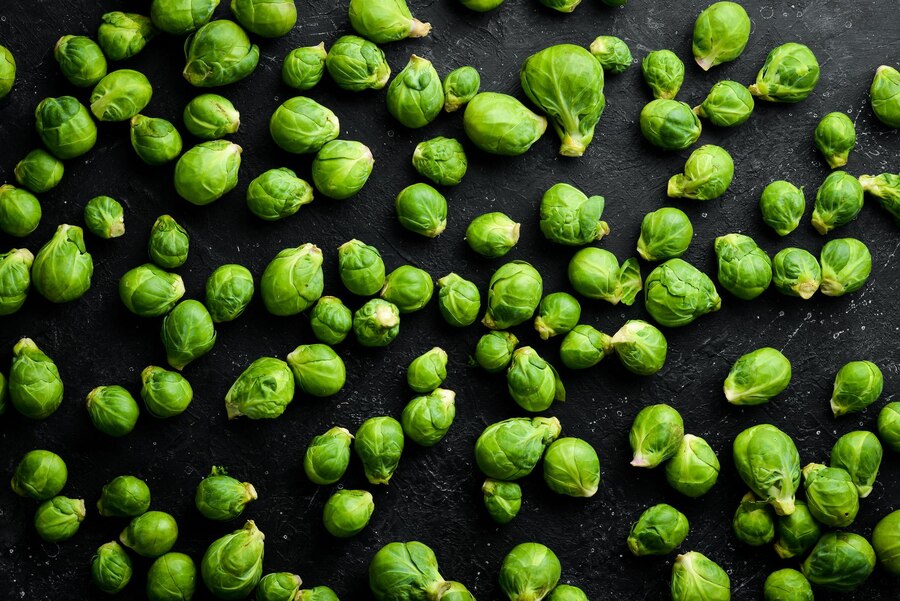
Preparing the Soil for Brussel Sprouts Planting
When it comes to preparing the soil for planting Brussel sprouts, there are several key steps that must be taken to ensure optimal growth and yield. The first step is to choose a well-draining soil that is rich in organic matter. Brussel sprouts thrive in soil that is loose, fertile, and has a pH level between 6.0 and 7.5.
Before planting, it is important to clear the area of weeds and debris. This can be done by hand or with the help of garden tools. Once the area is clear, it is time to amend the soil with organic matter such as compost or well-rotted manure. This will improve the soil structure and provide essential nutrients for the growing plants. It is recommended to incorporate the organic matter into the top 6-8 inches of soil using a garden fork or tiller.
After amending the soil, it is advisable to conduct a soil test to determine the nutrient levels and pH balance. This will help identify any deficiencies or imbalances that need to be addressed before planting. Based on the test results, specific fertilizers or soil amendments can be applied to provide the necessary nutrients for healthy Brussel sprout growth. It is important to follow the recommended application rates and timing to avoid over- or under-fertilization.
By following these steps, you will lay the foundation for successful Brussel sprout cultivation. The next section will delve into the specifics of sowing Brussel sprout seeds, providing valuable tips for a strong start.
Sowing Brussel Sprouts Seeds: Tips for a Strong Start
When it comes to sowing Brussels sprouts seeds, starting off on the right foot is crucial for ensuring strong and healthy plants. One of the first things to consider is the timing of your sowing. Brussels sprouts thrive in cool climates, so it’s best to sow the seeds about 4 to 6 weeks before the average last spring frost date in your area. This allows the seedlings to establish themselves before the weather gets too warm.
Before sowing the seeds, it’s important to prepare the soil properly. Brussels sprouts prefer a well-draining soil that is rich in organic matter. Start by loosening the soil with a garden fork or tiller to a depth of about 8 to 10 inches. Remove any rocks, debris, or weeds that may hinder the growth of the seedlings. To improve the soil’s fertility, incorporate compost or well-rotted manure. This will provide the necessary nutrients for strong and healthy Brussels sprouts plants.
When sowing the seeds, space them about 1 inch apart and cover them with a thin layer of soil. Keep the soil consistently moist but not waterlogged to promote germination. It’s helpful to use a fine mist spray or a watering can with a rose attachment to prevent the seeds from being displaced. Once the seeds have germinated, thin out the seedlings to ensure proper spacing. Aim for a spacing of about 18 to 24 inches between plants to allow for adequate airflow and room for the Brussels sprouts to develop.
By following these tips for sowing Brussels sprouts seeds, you’ll give your plants the best chance at a strong start. From here, it’s important to continue providing proper care, including watering, fertilizing, and protecting the seedlings from pests and diseases. So let’s delve into these topics next to ensure your Brussels sprouts grow into robust and bountiful plants.
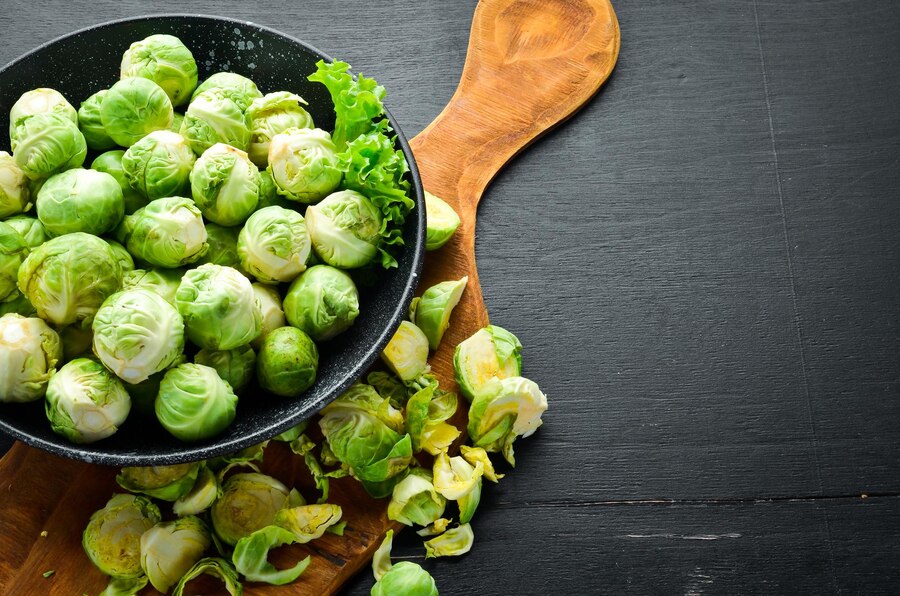
Caring for Brussel Sprouts Seedlings: Watering, Fertilizing, and Mulching
Maintaining the health and vitality of your Brussels sprouts seedlings is crucial for a successful harvest. Proper watering, fertilizing, and mulching techniques are essential to ensure optimal growth and productivity.
When it comes to watering your Brussels sprouts seedlings, consistency is key. These plants prefer a moist but not waterlogged environment. Check the soil regularly and water when the top inch feels dry. Ensure that the water reaches the roots by using a soaker hose or watering at the base of the plants. Avoid overhead watering, as it can lead to fungal diseases. Remember to adjust the watering frequency as the weather changes, as Brussels sprouts require more water during hot, dry periods.
Fertilizing is another critical aspect of caring for your Brussels sprouts seedlings. Before planting, incorporate well-rotted organic matter into the soil to provide essential nutrients. Once the seedlings emerge, begin applying a balanced, slow-release fertilizer according to the package instructions. As the plants grow, you can supplement with additional organic fertilizers, such as compost or compost tea, to promote healthy growth. Monitor the appearance of your seedlings for any signs of nutrient deficiencies, such as yellowing leaves, and adjust your fertilization routine accordingly.
Mulching is an effective technique to help maintain soil moisture levels and prevent weed growth around your Brussels sprouts seedlings. Apply a layer of organic mulch, such as straw or shredded leaves, around each plant, leaving a small gap around the stem to prevent rot. Mulching not only conserves moisture but also regulates soil temperature and reduces the need for frequent watering. Additionally, it acts as a natural weed barrier, minimizing competition for nutrients and preventing weed growth that can hinder the growth of your seedlings.
By following these watering, fertilizing, and mulching practices, you’ll provide your Brussels sprouts seedlings with the optimal conditions they need to thrive. With adequate moisture, balanced nutrition, and weed control, you’ll be on your way to cultivating healthy and robust plants that will reward you with a bountiful harvest.
Controlling Pests and Diseases in Brussel Sprouts: Preventive Measures
Controlling pests and diseases in Brussels sprouts is essential to ensure a successful harvest. By implementing preventive measures, you can minimize the chances of infestation and preserve the health of your plants. Here are some strategies to consider:
1. Crop rotation: Implementing a crop rotation plan can help break the life cycle of pests and diseases. Avoid planting Brussels sprouts in the same location year after year, as this can lead to a buildup of pathogens and pests. Instead, rotate your crop with unrelated plants to disrupt the pest’s natural habitat.
2. Good sanitation practices: Proper sanitation is crucial in preventing the spread of diseases. Remove and destroy any diseased or infested plant materials immediately to prevent the pathogens from spreading to other plants. Regularly clean your gardening tools to avoid carrying disease-causing organisms from one area to another.
By implementing these preventive measures, you can significantly reduce the risk of pests and diseases in your Brussels sprouts. Stay tuned for the next section where we will discuss identifying and combating common pests and diseases that may affect your crop.
Here’s a table outlining preventive measures for controlling pests and diseases in Brussels sprouts:
| Pest or Disease | Preventive Measures |
|---|---|
| Aphids | – Regularly inspect plants for aphids. Consider using natural predators or neem oil to control them. |
| Earwigs | – Reduce watering frequency to discourage moist soil (which earwigs prefer). Apply neem oil to deter them. |
| Maggots | – Learn how to prevent and manage garden maggots to protect roots and leaves. |
| Slugs | – Implement slug control methods to safeguard sprout plants. |
| Cutworms | – Explore ways to get rid of cutworms that may feed on plant material. |
| Hornworms | – Use kieselgur or manually remove hornworms to minimize damage. |
| Nematodes | – Spray a vinegar-water solution on leaves to combat nematodes. |
| Leaf miners | – Apply neem oil or insecticidal soap to control leaf miners. |
| Caterpillars | – Learn effective methods to manage caterpillars and loopers. |
| Whiteflies | – Find ways to eliminate whiteflies from sprout plants. |
| Plant rust | – Treat plant rust by following appropriate methods. |
| Damping-off | – Provide optimal lighting and soil conditions to prevent damping-off. |
| Powdery mildew | – Control powdery mildew using suitable techniques. |
| Downy mildew | – Ensure proper air circulation and avoid overwatering to combat downy mildew. |
| Leaf spot | – Learn how to get rid of leaf spot, a common disease in Brussels sprouts. |
| Fusarium wilt | – Address Fusarium wilt promptly to protect your sprout plants. |
Remember that healthy plants are the best defense against pests and diseases. Maintain good vigor by providing adequate water and planting in well-drained soil with full sun.
Identifying Common Brussel Sprouts Pests and Diseases
Common Brussel sprouts pests and diseases can hinder your efforts in cultivating a successful crop. Identifying these troublesome invaders early on is crucial to prevent infestation and damage to your plants. One common pest that affects Brussel sprouts is the cabbage aphid (Brevicoryne brassicae). These small green insects can quickly multiply and cause significant damage to the leaves, stunting the growth of your plants. Another pest to watch out for is the diamondback moth (Plutella xylostella). These tiny moths lay their eggs on the undersides of leaves, and their larvae feed on the foliage, creating small holes and causing defoliation.
In addition to pests, Brussel sprouts are also susceptible to diseases that can weaken the plants and reduce yields. One prevalent disease is clubroot (Plasmodiophora brassicae), which affects the roots and causes them to swell and become deformed. This disease can lead to stunted growth and even plant death. Another common disease is powdery mildew (Erysiphe cruciferarum). It appears as a white powdery substance on the leaves, causing them to wither and ultimately affecting the overall health of your plants. Early detection and appropriate management strategies are crucial for preventing the spread of these pests and diseases in your Brussel sprouts garden. Stay tuned for practical tips on how to control and manage these threats effectively.
Pruning and Supporting Brussel Sprouts Plants for Optimal Growth
Pruning and supporting Brussels sprouts plants is crucial for their optimal growth and overall health. By implementing proper pruning techniques and providing adequate support, you can ensure that your plants thrive and produce a bountiful harvest.
When it comes to pruning Brussels sprouts plants, it is essential to remove any lower or yellowing leaves that are nearing the ground. These leaves can hinder air circulation and create a favorable environment for diseases and pests. Additionally, removing these leaves allows the plant to direct more energy towards the growth of healthy sprouts.
Supporting Brussels sprouts plants is equally important, especially as they grow taller and heavier. One effective method is to use stakes or cages to provide support and prevent them from toppling over. By gently tying the main stem to the stake or attaching the cage around the plant, you can ensure that the plant remains upright and stable. This prevents breakage and damage, allowing the sprouts to form and mature properly.
Pruning and supporting Brussels sprouts plants may seem like additional chores, but the benefits they bring are well worth the effort. By maintaining proper air circulation, preventing diseases, and supporting the weight of the plants, you are setting the stage for optimal growth and a successful harvest. So, grab your pruners and stakes, and give your Brussels sprouts plants the care they deserve!
Harvesting Brussel Sprouts: Knowing When They’re Ready
When it comes to harvesting Brussels sprouts, timing is everything. These miniature cabbage-like vegetables reach their prime when their heads are firm and compact, usually about 1 to 2 inches in diameter. It’s important not to let them grow too large, as they can become tough and less flavorful. To determine if your Brussels sprouts are ready to be harvested, gently squeeze them between your fingers. If they feel firm and tight, it’s a good sign that they’re ready to be picked. Additionally, the leaves surrounding the sprouts should be green and healthy-looking. If the leaves are yellowing or wilting, it could be a sign that the plant is stressed or past its peak.
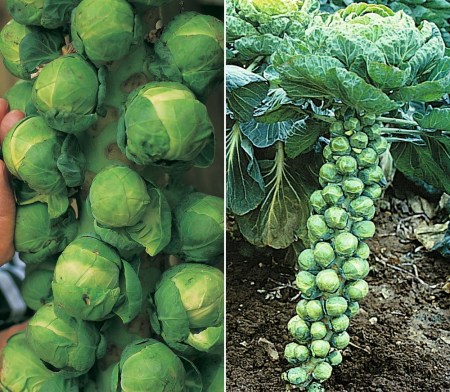
Properly Storing and Preserving Brussel Sprouts for Longevity
Once you have harvested your brussel sprouts, it is important to properly store and preserve them to ensure their longevity. Storing brussel sprouts correctly can help maintain their flavor, freshness, and nutritional value for an extended period of time. Here are some tips to ensure that your brussel sprouts stay delicious and nutritious for as long as possible.
First and foremost, it is essential to remove any yellow or damaged leaves from the brussel sprouts. These leaves can lead to spoilage and should be discarded. Next, gently wash the brussel sprouts to remove any dirt or debris that may have accumulated on the outer leaves. Once washed, allow the sprouts to dry thoroughly before storage. Moisture can lead to mold or bacterial growth, so it is important to store the brussel sprouts completely dry.
To store the brussel sprouts, place them in a perforated plastic bag or a container with holes for proper air circulation. This will help prevent excess moisture buildup while still allowing the sprouts to breathe. Place the bag or container in the refrigerator’s crisper drawer, which provides a cool and humid environment suitable for brussel sprouts. Properly stored, brussel sprouts can last for up to two weeks in the refrigerator.
Ensuring the longevity of your brussel sprouts not only saves you money but also allows you to enjoy these nutritious vegetables for an extended period. By following these storage guidelines, you can make the most of your brussel sprout harvest and continue to incorporate them into your favorite recipes with confidence.
Creative and Tasty Ways to Cook Brussel Sprouts
Brussel sprouts may not be everyone’s favorite vegetable, but with a little creativity in the kitchen, they can be transformed into flavorful and delicious dishes that even the biggest skeptics will enjoy. One popular way to cook brussel sprouts is by roasting them. Simply toss the sprouts in olive oil, sprinkle with salt and pepper, and roast in a preheated oven until they are crispy on the outside and tender on the inside. For an extra burst of flavor, you can add garlic, lemon zest, or even a sprinkle of Parmesan cheese before roasting.
If you’re looking to add some variety to your brussel sprouts repertoire, consider stir-frying them. Heat up a skillet with some olive oil, then add the sprouts and any other desired vegetables like bell peppers, onions, or carrots. Cook them over high heat, tossing them occasionally, until they are just tender. To take it up a notch, you can add a sauce like soy sauce, balsamic vinegar, or honey mustard to give the dish an extra kick of flavor. Whether you choose to roast or stir-fry, experimenting with different spices, herbs, and sauces can help you discover your own unique and tasty way to enjoy brussel sprouts.
While brussel sprouts may not be the most glamorous vegetable, their versatility in the kitchen makes them a great addition to any meal. Whether you roast them to crispy perfection or stir-fry them with a flavorful sauce, brussel sprouts have the potential to surprise and delight even the most discerning of taste buds. So next time you’re looking to get creative in the kitchen, give brussel sprouts a chance and see what delicious dishes you can create.
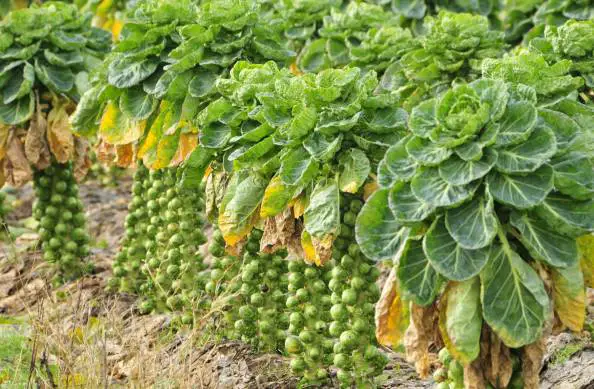
Exploring the Nutritional Benefits of Brussel Sprouts
Brussel sprouts are a nutritional powerhouse, packed with essential vitamins, minerals, and antioxidants. These miniature, cabbage-like vegetables are low in calories and high in fiber, making them an excellent addition to any healthy diet. One serving of brussel sprouts provides a significant amount of vitamin C, vitamin K, and vitamin A, all crucial for maintaining a strong immune system and promoting healthy vision.
In addition to vitamins, brussel sprouts are rich in minerals such as potassium, calcium, and magnesium. These minerals are essential for maintaining proper nerve function, supporting bone health, and regulating blood pressure. Brussel sprouts also contain significant amounts of folate, a B-vitamin that plays a vital role in DNA synthesis and cell division.
Furthermore, brussel sprouts are a rich source of antioxidants, which help protect the body against damage from harmful free radicals. One particular antioxidant found in brussel sprouts, called kaempferol, has been shown to have anti-inflammatory properties and may help reduce the risk of chronic diseases, including heart disease and certain types of cancer.
With all their nutritional benefits, it’s clear that brussel sprouts can be a valuable addition to your diet. Whether roasted, steamed, or sautéed, these flavorful vegetables can elevate any dish while providing a plethora of health benefits. So why not incorporate them into your meals and reap the rewards of this versatile and nutrient-dense superfood?
• Brussel sprouts are low in calories and high in fiber, making them a great choice for weight management and digestive health.
• One serving of brussel sprouts provides a significant amount of vitamin C, which is essential for immune function and collagen production.
• They are also an excellent source of vitamin K, important for blood clotting and bone health.
• Brussel sprouts contain vitamin A, which supports healthy vision and skin.
• The minerals potassium, calcium, and magnesium found in brussel sprouts contribute to nerve function, bone strength, and blood pressure regulation.
• Folate in brussel sprouts plays a vital role in DNA synthesis and cell division.
• The antioxidants present in brussel sprouts help protect the body against damage from free radicals that can lead to chronic diseases like heart disease and cancer.
• Kaempferol, a specific antioxidant found in brussel sprouts has anti-inflammatory properties that may further reduce the risk of chronic diseases.
Brussel Sprouts: A Versatile Ingredient for Various Dishes
Brussel sprouts are a versatile ingredient that can be used in a wide range of dishes, adding a unique flavor and texture to meals. Whether you prefer them roasted, steamed, sautéed, or even raw, these small cruciferous vegetables offer endless culinary possibilities.
One popular way to enjoy Brussels sprouts is by simply roasting them in the oven. Tossing them with olive oil, salt, and pepper, then roasting at a high temperature until they are caramelized and tender, brings out their natural sweetness and imparts a delightful crispiness. This method pairs well with other roasted vegetables, such as carrots or parsnips, creating a colorful and nutritious side dish.
Another creative option is to use Brussels sprouts as a main ingredient in a stir-fry. Slicing them thinly and combining them with other vegetables, such as bell peppers, snow peas, and mushrooms, results in a vibrant and nutritious meal. Add a protein source like tofu or chicken, and a flavorful sauce, and you have a quick and satisfying dinner that highlights the versatility of Brussels sprouts.
From simple side dishes to hearty main courses, Brussels sprouts can elevate any meal with their distinctive taste and nutritional benefits. With their adaptability in various cooking methods, these cruciferous veggies can be transformed into a wide array of appetizing dishes, satisfying the palates of even the most discerning eaters. So, why not experiment in the kitchen and discover the many ways you can incorporate Brussels sprouts into your cooking repertoire?
Certainly! Here’s a table with Brussels sprouts recipes and gardening tips to share with fellow gardeners:
| Recipe or Tip | Description |
|---|---|
| Bacon Roasted Brussels Sprouts | Roast Brussels sprouts until lightly caramelized and toss with bacon. A simple and delicious preparation that pairs well with various main dishes. |
| Chickpea and Brussels Sprouts Salad | A protein-rich salad with tahini dressing, featuring crisp raw sprouts. Nutty tahini and lemon dressing complement the slightly bitter flavor of the sprouts. |
| Cream of Brussels Sprouts Soup | A slurpable soup with a nutty and creamy taste, even without dairy. Roasting the sprouts with aromatics adds rich umami flavor. |
| Air Fryer Brussels Sprouts | Quick and crispy Brussels sprouts seasoned with white pepper, garlic chili paste, and honey. A healthy side dish cooked without deep-frying. |
| One-Dish Chicken Thighs, Pears, and Brussels Sprouts | Seared chicken thighs cooked with sprouts, pears, and bacon for a simple and flavorful meal. |
| Quick Shredded Brussels Sprouts With Bacon | Sauté thin slices of Brussels sprouts with crisp bacon, garlic, and lemon juice for a savory side dish. |
| Brussels Sprouts and Sweet Potato Hash | A spiced veggie hash with eggs cooked on top, perfect for breakfast or brunch. |
| Balsamic Vinegar Roasted Brussels Sprouts | Roast Brussels sprouts with a drizzle of balsamic vinegar for a sweet and savory flavor combination. |
Remember to share these recipes and tips with your fellow gardeners, and happy gardening!
Sharing Brussel Sprouts Recipes and Tips with Fellow Gardeners
Brussel sprouts are a versatile and nutritious ingredient that can be enjoyed in a variety of dishes. Whether you’re a seasoned gardener or just starting out, sharing your favorite brussel sprouts recipes and tips with fellow enthusiasts can be a rewarding experience. By exchanging ideas and techniques, we can all learn new ways to cultivate, prepare, and enjoy these delicious vegetables.
One way to share your brussel sprouts expertise is by participating in online gardening forums or social media groups dedicated to vegetable gardening. These platforms provide an opportunity to connect with like-minded individuals who share the same passion for growing and cooking with brussel sprouts. You can post your favorite recipes, share tips on pest control or soil preparation, and even ask questions to fellow gardeners. The sharing of knowledge and experiences creates a sense of community and fosters a supportive gardening network.
Additionally, consider hosting a brussel sprouts-themed gathering or workshop in your local community. This can be a great way to meet fellow gardeners face-to-face and demonstrate your expertise in a hands-on environment. You can showcase your favorite brussel sprouts recipes, offer tips on proper harvesting and storage techniques, and even provide seedlings or seeds for participants to take home and cultivate in their own gardens. By sharing your knowledge and passion, you can inspire others to explore the wonders of brussel sprouts and contribute to a thriving gardening community.
Please do watch video!
How long does it take for Brussels sprouts to grow from seed to harvest?
Brussels sprouts typically take around 90-100 days from seed to harvest, depending on the variety and growing conditions.
Can Brussels sprouts be grown in containers or pots?
Yes, Brussels sprouts can be grown in containers or pots as long as they have enough space for the plant to develop a strong root system and receive adequate sunlight and nutrients.
What are some common pests that can affect Brussels sprouts?
Common pests that can affect Brussels sprouts include aphids, cabbage worms, cabbage loopers, and slugs. These pests can be controlled through various preventive measures such as using insecticidal soaps or implementing natural pest control methods.
How can I tell if Brussels sprouts are ready to be harvested?
Brussels sprouts are ready to be harvested when the sprouts are firm, green, and reach about 1-2 inches in diameter. Start harvesting from the bottom of the plant, plucking the sprouts when they are fully developed but still tightly closed.
What are some creative ways to cook Brussels sprouts?
Brussels sprouts can be roasted, sautéed, grilled, or even used in stir-fries. They can also be incorporated into salads, soups, or added as a side dish to various meals. Experimenting with different flavors and seasonings can bring out the best in Brussels sprouts.
Are Brussels sprouts a good source of nutrients?
Yes, Brussels sprouts are a nutrient-rich vegetable. They are high in fiber, vitamins C and K, and contain significant amounts of antioxidants. They also provide essential minerals like potassium and manganese.
Can Brussels sprouts be used in vegetarian or vegan dishes?
Absolutely! Brussels sprouts are a versatile ingredient that can be used in a wide range of vegetarian and vegan dishes. They can be substituted for meat in stir-fries, added to pasta dishes, or even used as a main ingredient in plant-based recipes.
How can I store Brussels sprouts to prolong their freshness?
Brussels sprouts can be stored in the refrigerator for up to two weeks. It is best to keep them unwashed and in a perforated bag or wrapped in a damp paper towel to maintain their freshness. Avoid storing them near fruits that release ethylene gas, as it can cause the sprouts to deteriorate quickly.
Are there any alternative uses for Brussels sprouts beyond cooking?
While Brussels sprouts are primarily used as a food source, they can also be utilized in decorative arrangements or as a unique addition to floral displays. Their vibrant green color and unique shape can add a touch of whimsy to floral arrangements or centerpieces.

Nicole Burke is a dynamic writer at SouthElMonteHydroponics, fueled by her passion for horticulture and environmental sustainability. Armed with a degree in Environmental Science from a renowned institution, Nicole’s expertise lies in hydroponic gardening, organic farming, and biodiversity conservation. Her insatiable curiosity and love for nature drive her to explore innovative techniques in hydroponics, seeking to revolutionize the way we grow crops in urban environments. Nicole’s writing reflects her deep commitment to promoting eco-conscious practices and fostering a deeper connection between humans and the natural world. Through her engaging storytelling, she inspires others to embrace sustainable living and harness the power of hydroponics for a greener future.




